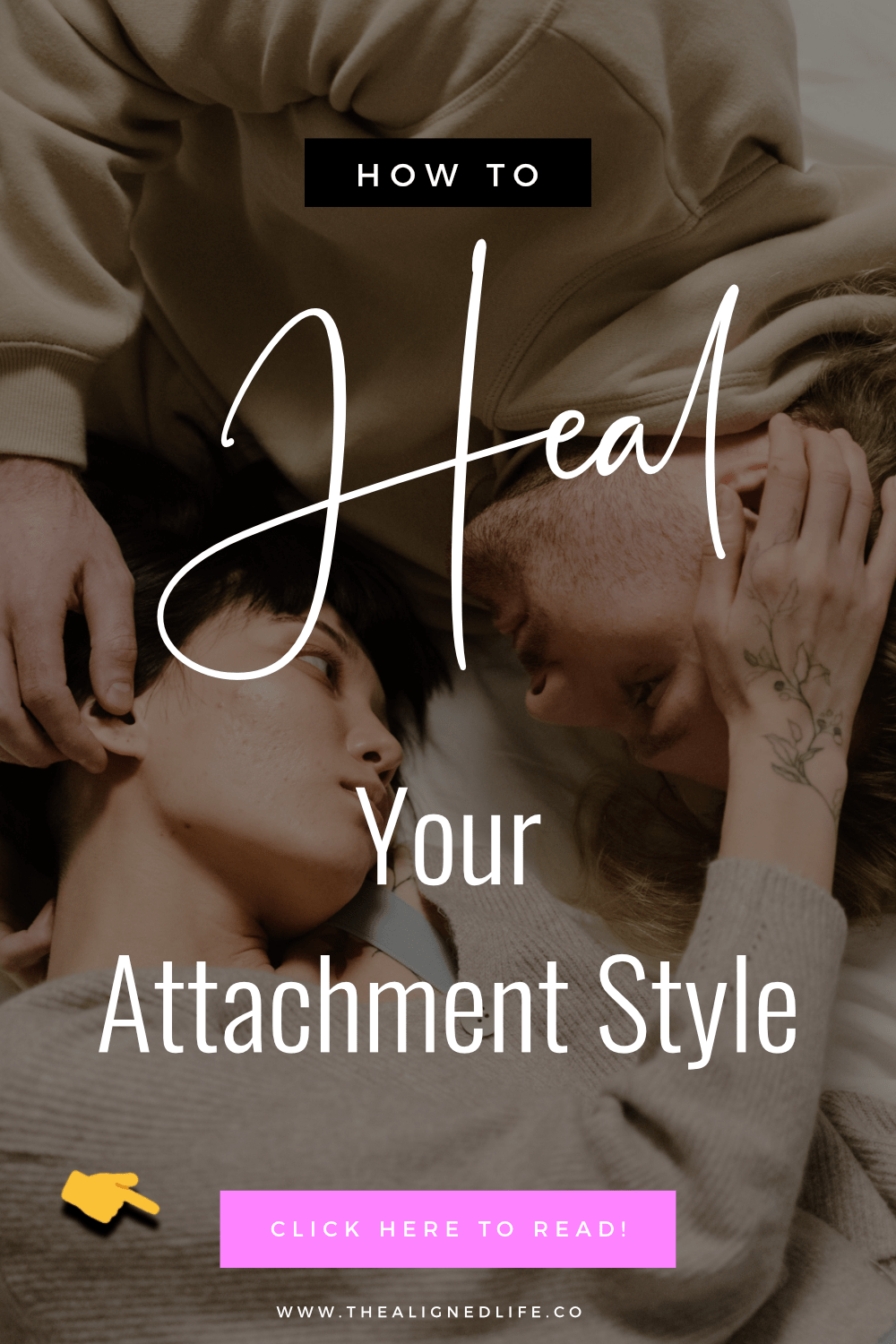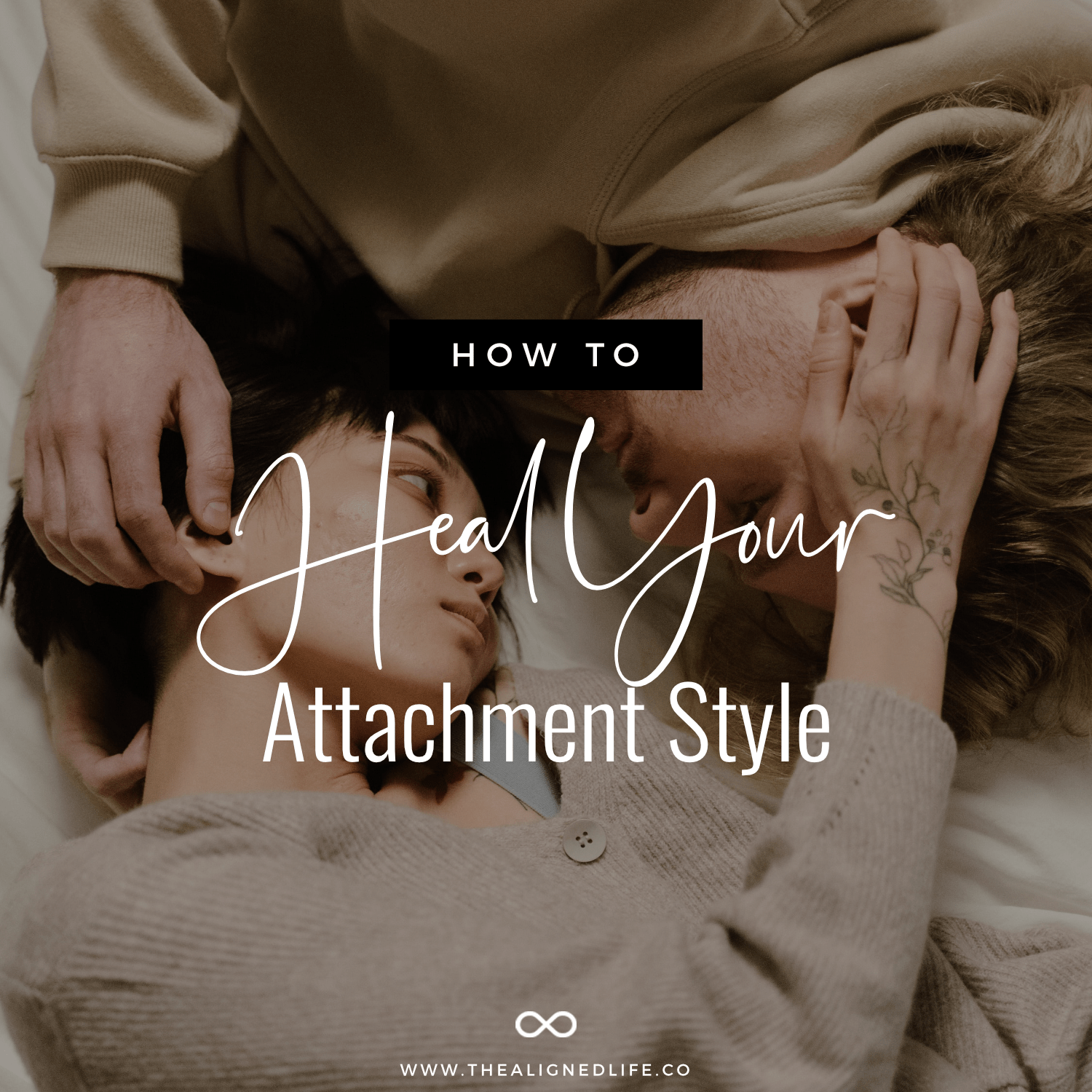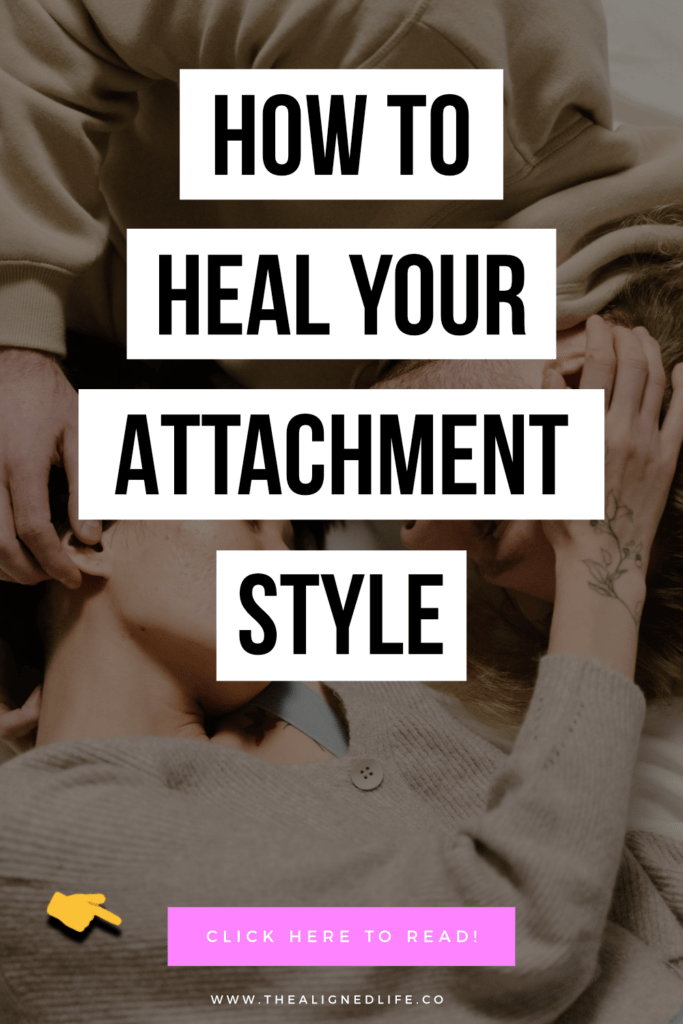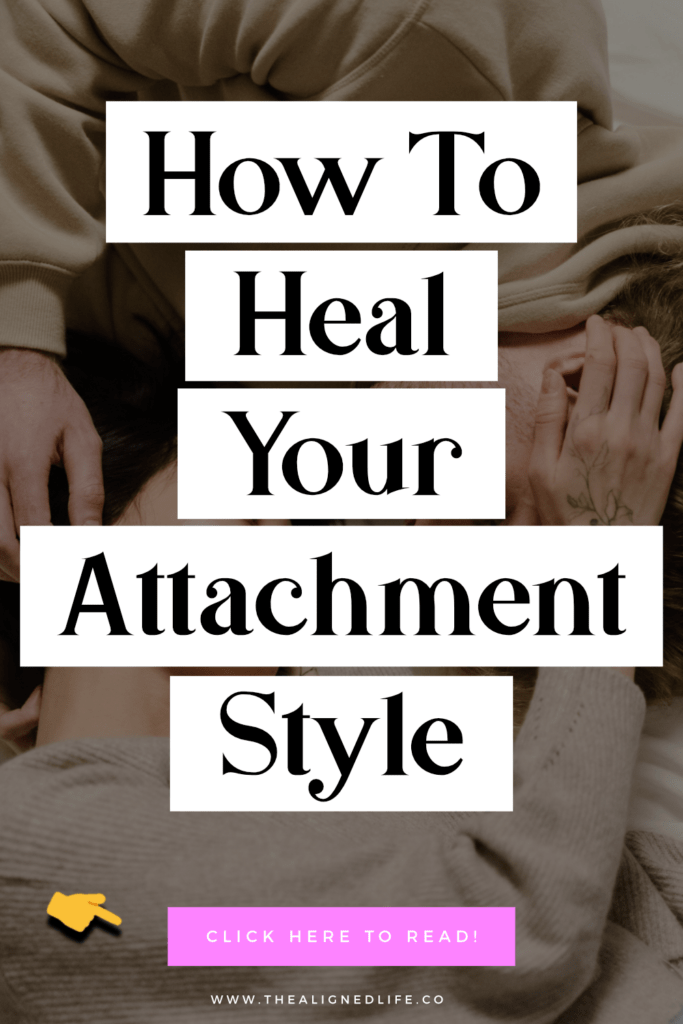How To Heal Your Attachment Style
Do you need to heal your attachment style?
If you feel unlucky in love, then the answer is yes!
You crave it. You dream about it.
But in reality? Things haven’t been so great. 😣
Perhaps you find yourself going on a date and getting so excited about it…only to get ghosted a few weeks later.
Or perhaps you get into relationships where you feel like your partner is drifting further and further away from you. The more you try to pull them back in, the more they resist–until you breakup (again).
It’s such a difficult place to be. You want that love so badly but it seems like you just can’t find anyone to give it to you.
So let me tell you a secret:
You’re not a love-repellent degenerate. Or doomed to be single forever.
You probably just have an anxious attachment style.
Whether you’re curious about attachment styles in general or are ready to heal yours, keep reading…
What Is An Attachment Style?
Basically, the way we were raised has a huge reflection on how we give and receive love an an adult.
When it comes to love, there are two major attachment styles: anxious and avoidant.
(There are also mixtures of the two, like fearful avoidant, but let’s keep them simple and separate for today.)
Like so much in our adult life, these attachment styles were formed way back during our childhood. At this point they are completely subconscious–which means that it might feel like the world is constantly working against you. But really, you are engaging in behaviors or mindsets that are setting you up to be unlucky in love.
However, that’s also good news! Whatever has been learned, can be unlearned. Which means you have the ability to heal this deep psychological wounding and change your relationship to love…forever.
Anxious Attachment Styles
An anxious attachment style craves love and support from a partner. But the same desire triggers their deep fear of abandonment. Even while they attempt to the love they crave, the pursuit of this goal heightens their anxiety and security–even to the point of paranoia. This can look like rushing into relationships too fast, obsessing about their partner (or potential partner) or actually trying to “catch” their partner out by going through their phone, surprising them at work, etc.
Anxious attachment styles are formed when a child’s emotional needs are not consistently met. That could stem from parents who divorced, or who had addiction issues. Or it could be from a parent who made you go to your room until you stopped crying. (Those are just a few examples of course.)
Ultimately, this teaches the child that they are solely responsible for getting their emotional needs met. As a result, the child tends to become hypervigilant, 8(perfectionist and or people-pleasing) and focused on monitoring their parents moods so they can adjust their behavior accordingly (a behavior that follows them into adulthood).
Avoidant Attachment Style
An avoidant attachment style has a fundamental fear of emotional intimacy. In their adult life, they’re often independent or choose short-term sexual relationships over long-term partnership. Even when they’re in a relationship, they find themselves “fighting” for their perceived independence: by withdrawing their attention or even cheating on their partner.
The avoidant may have faced similar issues as the anxious attachment (unpredictable emotions/actions of a parent). Or they might have experienced emotional incest: a parent using them like a friend or partner instead of the child that they were. Either way, the end result is that emotional closeness threatens their feelings of safety and security.
The Eternal Dance Of The Anxious and The Avoidant
While these two attachment styles can happen to any gender, women tend to fit the anxious profile and men tend to fall into the anxious profile. Cue: basically the entire plot line of Sex And The City or modern rom-coms in general.
It’s no wonder really. While we eventually get triggered by those relationships (or situationships), they’re also insanely appealing. That’s due to something called Repetition Complusion: basically, your brain is subconsciously attracted to the very thing that hurt it way back when. Only it thinks that this time winning the love or affection of that distant or emotionally unavailable person will finally let you feel whole again.
Unfortunately, that doesn’t always work. While not all anxious-avoidant relationships are doomed to failure, they aren’t exactly set up for automatic success.
The best cure for everyone is to work on creating a secure attachment style: being able to feel your feelings, express them, and share them, without expecting someone to “fix” them or without feeling threatened by those things.
The second best cure is to partner yourself up with a secure attachment style. However, truly secure attachment styles can be rare (especially in the online dating world). Plus many people are straight up addicted to the emotional highs and lows of pursuing the avoidant types.
That means that when someone secure comes along they don’t even see them as romantic partners. In reality, it’s not a lack of “spark” or “butterflies”. It’s just that their old trauma wounding has not been activated).
Quick Tips To Heal Your Anxious Attachment Style:
Get busy focusing on you. It sounds cliche but honestly building a life that fulfills you and is full of cool things and people is the cure for almost all of our self-worth issues.
Force yourself to play it cool. What’s your particular patterning when it comes to dating? Whether that’s imagining your wedding when you’re on your first date or compulsively checking his phone while he’s in the bathroom, it’s time to put an end to your own bad behavior.
Realize when someone is triggering you & decide whether or not you want to be in this situation long-term. Not everyone will be right for you and that’s okay. Knowing when to walk away will give you your mental peace back. (Besides, no one changes through force. They are who they are! It’s up to you to make your decision from there.)
Here’s the first step to getting the love you really want.
If you’re ready to heal your attachment wounds so you can feel free and supported in love, then let’s take the healing deeper.
The most important message I want to share with you today is that attachment style is always something we learn–and therefore we can put in the effort to unlearn it. A secure attachment style is possible for you, no matter what happened or how long you have been (unhappily) single.

Love This Post? Then Save It To Your Self-Improvement Board On Pinterest!

- Seeing 222 Everywhere? The Meaning of Angel Number 222 - April 16, 2024
- 10+ Spiritual Shows To Watch On Netflix - April 9, 2024
- Sacral Authority Type | Human Design Explained - April 8, 2024



